Approach
The Rule of Law Roadmap is guided by the Whole-of-Government Approach which is anchored in joined-up coordination and integrated management of a set of activities between the Criminal Justice Institutions, where the aim is to generate outcomes that cannot be achieved by each institution working in isolation.
The rationale for whole of government work is to eliminate ‘silos’, or institutions working in isolation from one another, and achieve seamless coordination. It aims to optimise the impact of government by using all the instruments at the disposal of the State in an integrated way in support of particular outcomes to ensure effective delivery of the rule of law.
The Whole of Government approach requires a particular way of working which involves:




